Wilcoxon Research introduces first stand-alone 4-20 mA vibration displacement sensor for machinery monitoring
30th April 2008
Source:
Wilcoxon Research
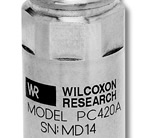
Wilcoxon Research announces the addition of a displacement sensor to its popular PC420 Series of 4-20 mA vibration sensors. The PC420D is the first IEPE displacement transducer and 4-20 mA vibration transmitter packaged as a single sensor.
Wilcoxon’s PC420 Series of sensors monitors rotating equipment and outputs a real time 4-20 mA signal proportional to the vibration level. By trending this real time data, plant personnel are able to schedule preventative maintenance activities around planned downtime, saving time and money in costly unexpected repairs.
The PC420D sensor outputs a 4-20 mA signal based on the displacement level of the machine vibration. The 4-20 mA output is determined by first measuring the peak to peak vibration, then converting that level to a 4-20 mA signal. Because balance components tend to dominate the vibration spectrum when viewed in displacement units, the PC420D sensor is able to track the balance component of machines, one of the most sought after parameters. Integrating this signal into an existing PLC, DCS or SCADA system simplifies real time health monitoring because vibration, formerly considered too complex, can now be trended in easily understood units of mils or millimeters of displacement.
Measuring displacement can unmask hidden problems and provide data in easy to understand measurement units. Instead of converting to displacement after the measurement is taken, a common practice in diagnostic vibration monitoring systems which can introduce errors known as “ski slopes”, the PC420D sensor integrates at the measurement point for the cleanest vibration data.
“Plant personnel want to know the amount of ‘mils’ at which a machine is operating, because ‘mils’ is a readily understood parameter,” said Tom Smith, Vice President of Sales and Marketing at Wilcoxon Research. “Existing displacement-type sensors, such as eddy current probes that measure shaft position, do not determine the level of machine vibration so we designed a displacement sensor specifically to meet this need.”
The PC420D is ideal for condition based monitoring and predictive maintenance of motors in the speed (frequency) range of 300 rpm to 60,000 rpm (5 Hz to 1,000 Hz). The PC420D can be widely used to monitor balance of plant instrumentation such as pump motors, blowers, fan motors, compressor motors, and a wide variety of machine tool drive motors to significantly reduce failure rates in the field. Motors within the above speed range are frequently found in industries such as pulp and paper, nuclear power, power generation, petrochemical, oil and gas, food and beverage, pharmaceuticals, railway, steel making, and wastewater treatment plants.
A wide variety of PC420 Series sensors are available to suit individual monitoring needs. The 4-20 mA output can be proportional to acceleration or velocity, with the full scale value being equal to the root-mean-square (rms), peak, or Wilcoxon’s exclusive true peak level. With the addition of this new product, Wilcoxon now offers reliability engineers the ability to monitor the peak to peak displacement of their machinery.
The PC420D sensor outputs a 4-20 mA signal based on the displacement level of the machine vibration. The 4-20 mA output is determined by first measuring the peak to peak vibration, then converting that level to a 4-20 mA signal. Because balance components tend to dominate the vibration spectrum when viewed in displacement units, the PC420D sensor is able to track the balance component of machines, one of the most sought after parameters. Integrating this signal into an existing PLC, DCS or SCADA system simplifies real time health monitoring because vibration, formerly considered too complex, can now be trended in easily understood units of mils or millimeters of displacement.
Measuring displacement can unmask hidden problems and provide data in easy to understand measurement units. Instead of converting to displacement after the measurement is taken, a common practice in diagnostic vibration monitoring systems which can introduce errors known as “ski slopes”, the PC420D sensor integrates at the measurement point for the cleanest vibration data.
“Plant personnel want to know the amount of ‘mils’ at which a machine is operating, because ‘mils’ is a readily understood parameter,” said Tom Smith, Vice President of Sales and Marketing at Wilcoxon Research. “Existing displacement-type sensors, such as eddy current probes that measure shaft position, do not determine the level of machine vibration so we designed a displacement sensor specifically to meet this need.”
The PC420D is ideal for condition based monitoring and predictive maintenance of motors in the speed (frequency) range of 300 rpm to 60,000 rpm (5 Hz to 1,000 Hz). The PC420D can be widely used to monitor balance of plant instrumentation such as pump motors, blowers, fan motors, compressor motors, and a wide variety of machine tool drive motors to significantly reduce failure rates in the field. Motors within the above speed range are frequently found in industries such as pulp and paper, nuclear power, power generation, petrochemical, oil and gas, food and beverage, pharmaceuticals, railway, steel making, and wastewater treatment plants.
A wide variety of PC420 Series sensors are available to suit individual monitoring needs. The 4-20 mA output can be proportional to acceleration or velocity, with the full scale value being equal to the root-mean-square (rms), peak, or Wilcoxon’s exclusive true peak level. With the addition of this new product, Wilcoxon now offers reliability engineers the ability to monitor the peak to peak displacement of their machinery.
Similar articles
More from Wilcoxon Research
- Wilcoxon.Com Adds A Spanish-language Page 20th October 2010
- Wilcoxon Research Measurement Products Now Sold With Meggitt’s Endevco® Product Line 26th August 2010
- Meggitt Sensing Systems celebrates the 50th anniversary of Wilcoxon Research 6th May 2010
- Meggitt’s Wilcoxon Research M12-style accelerometers and cable assemblies 23rd March 2010

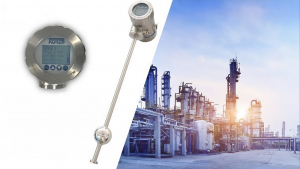
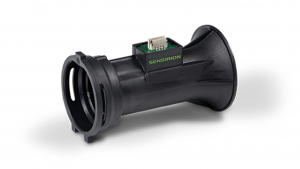
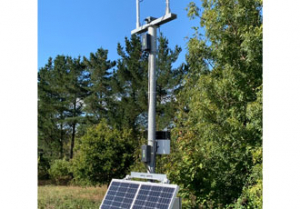
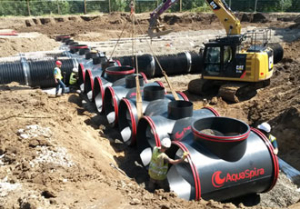







Write a comment
No comments